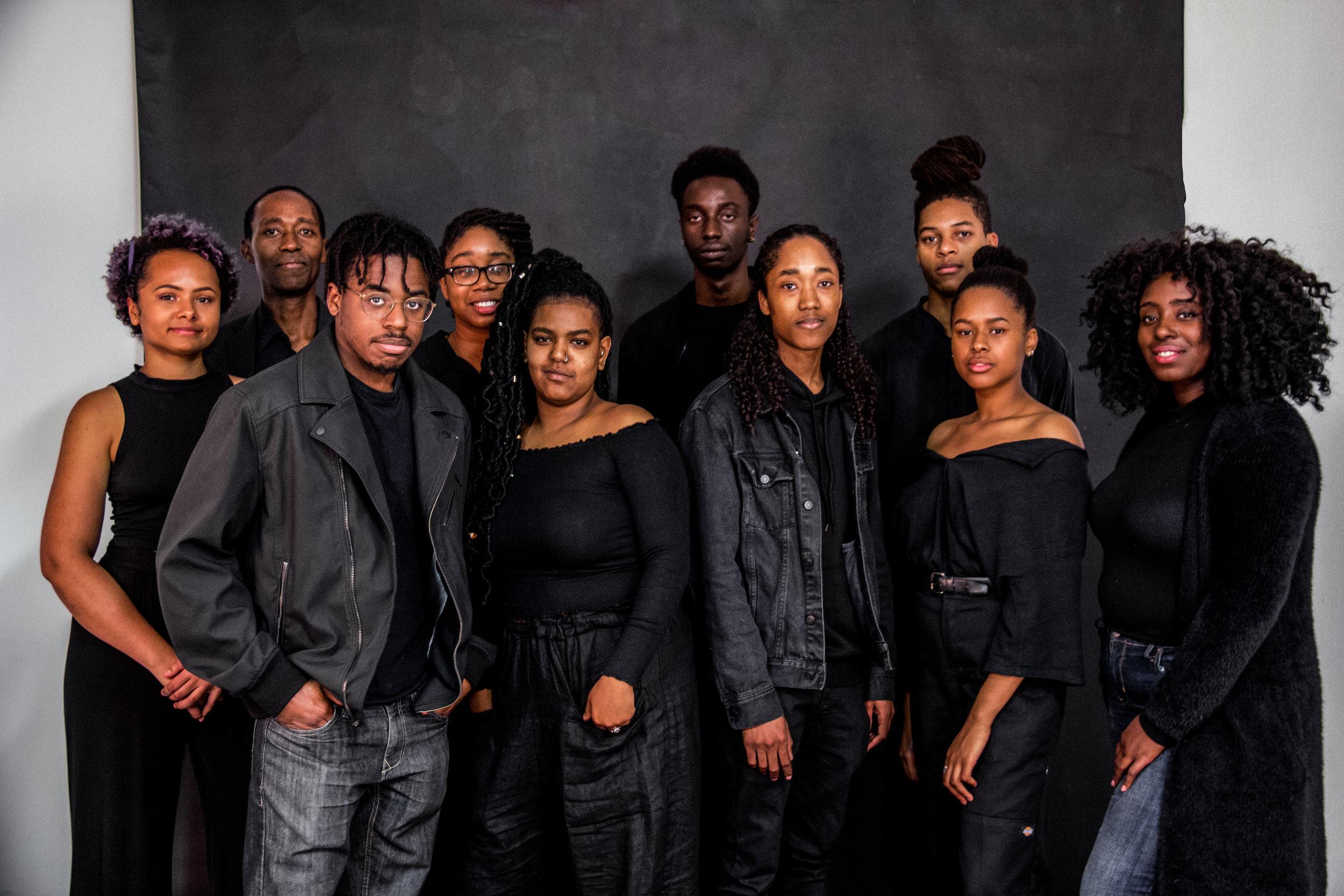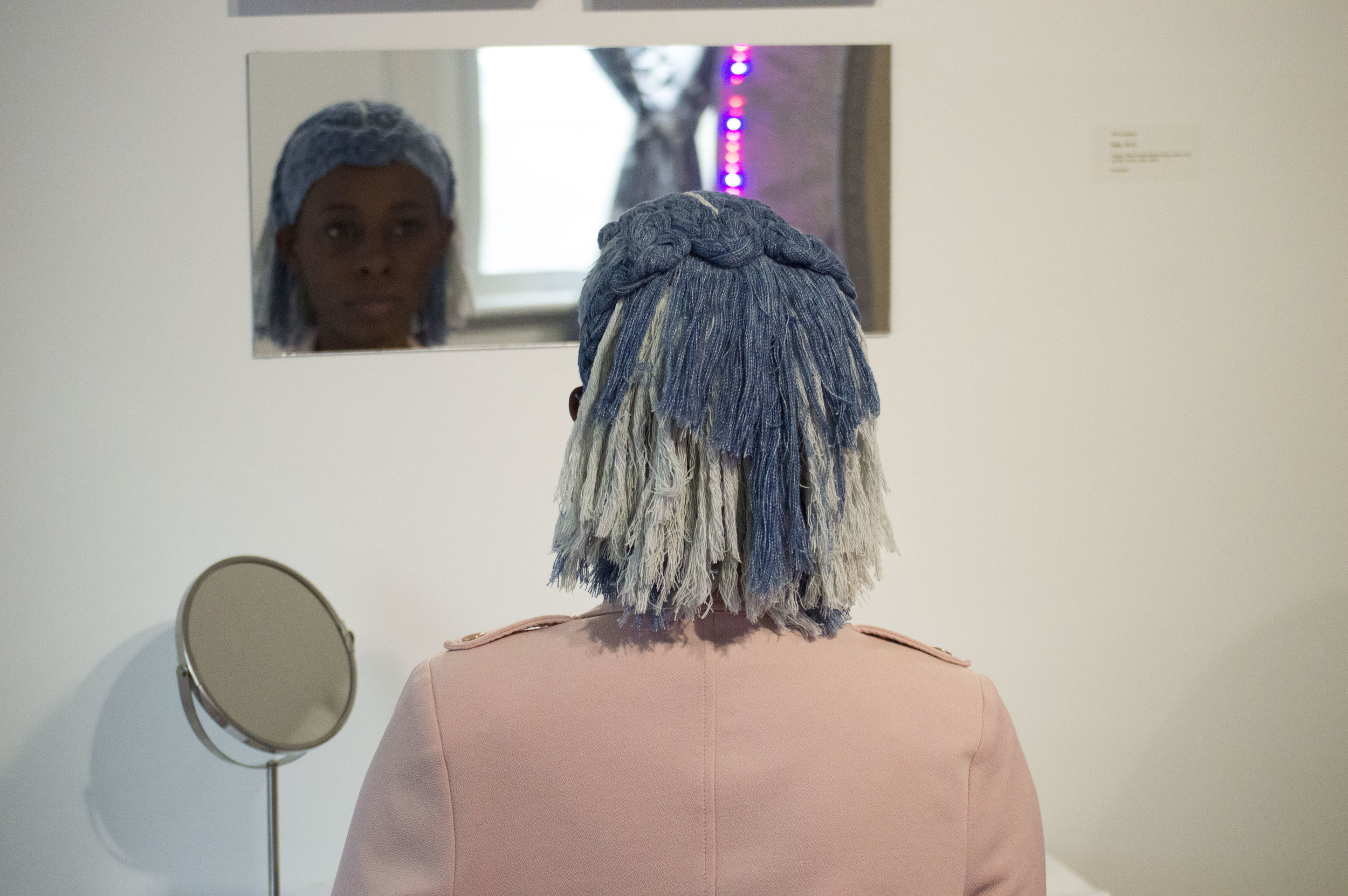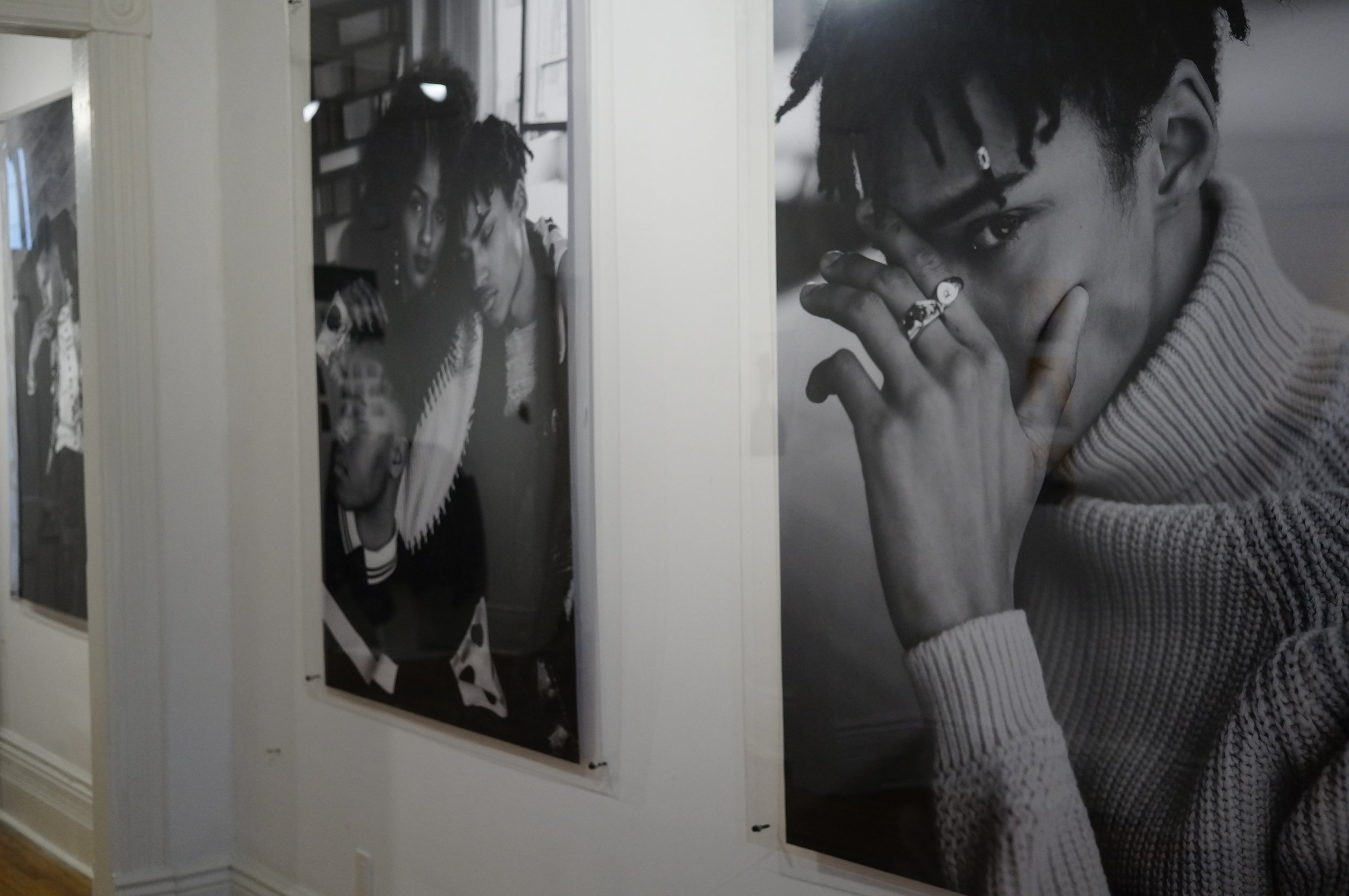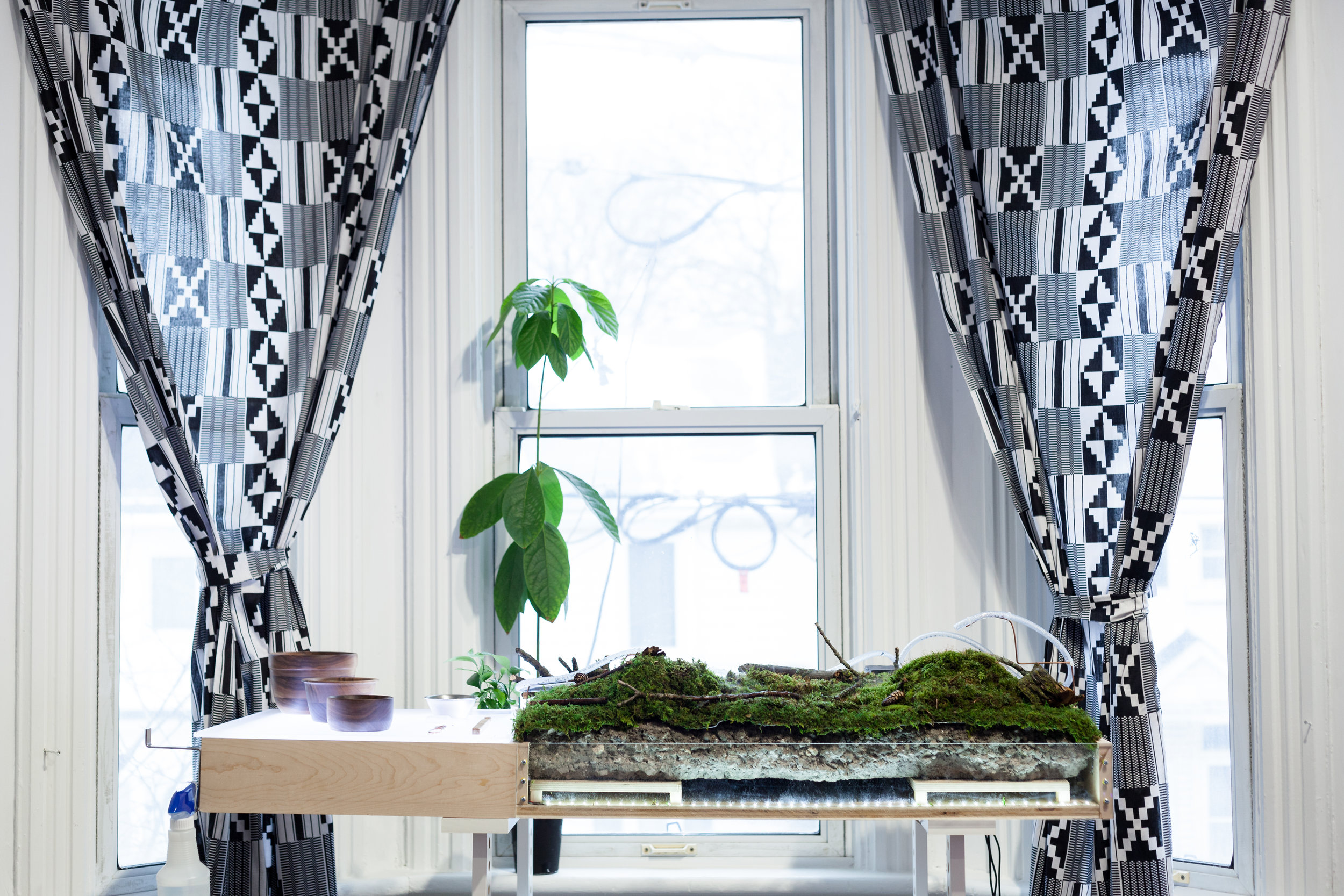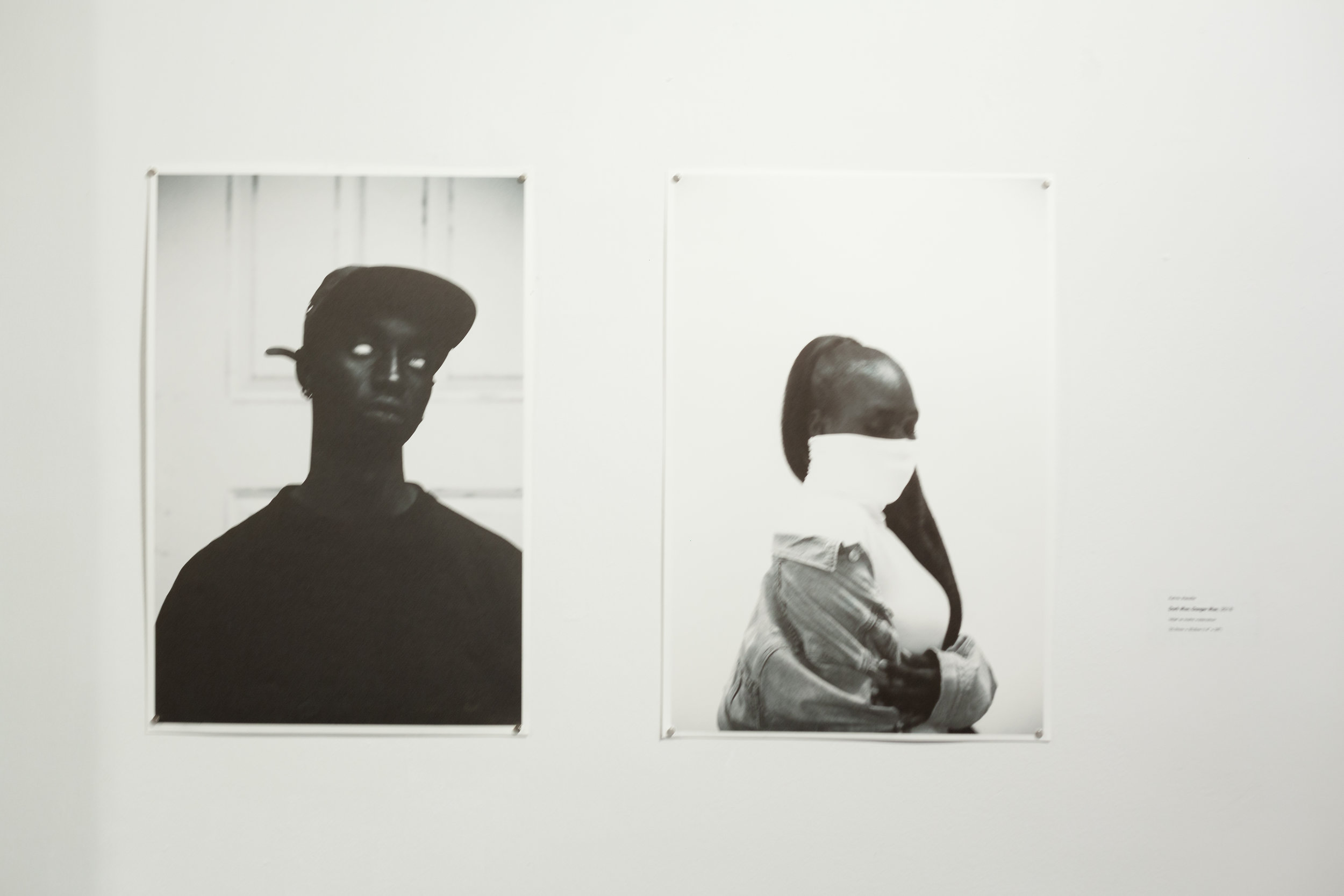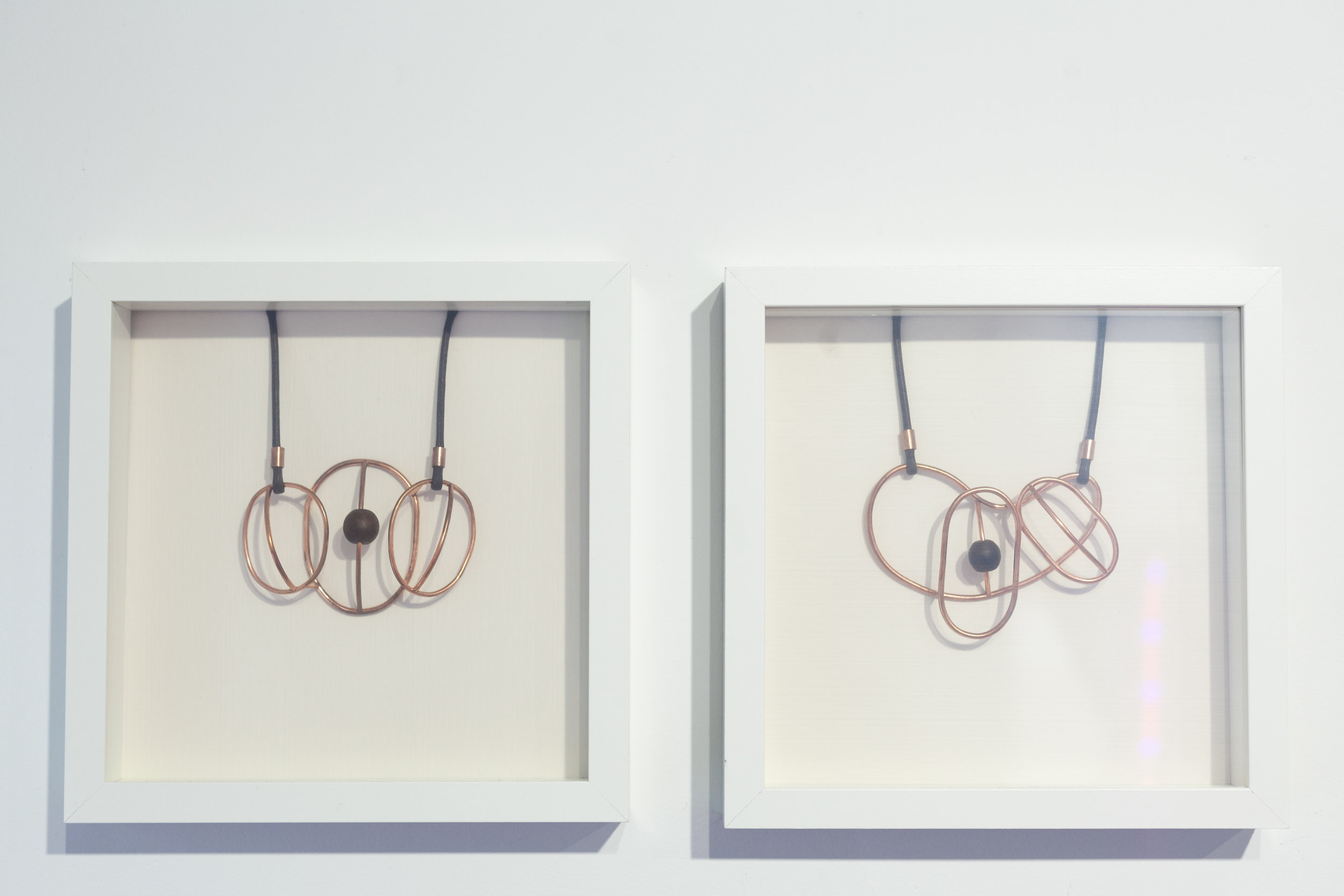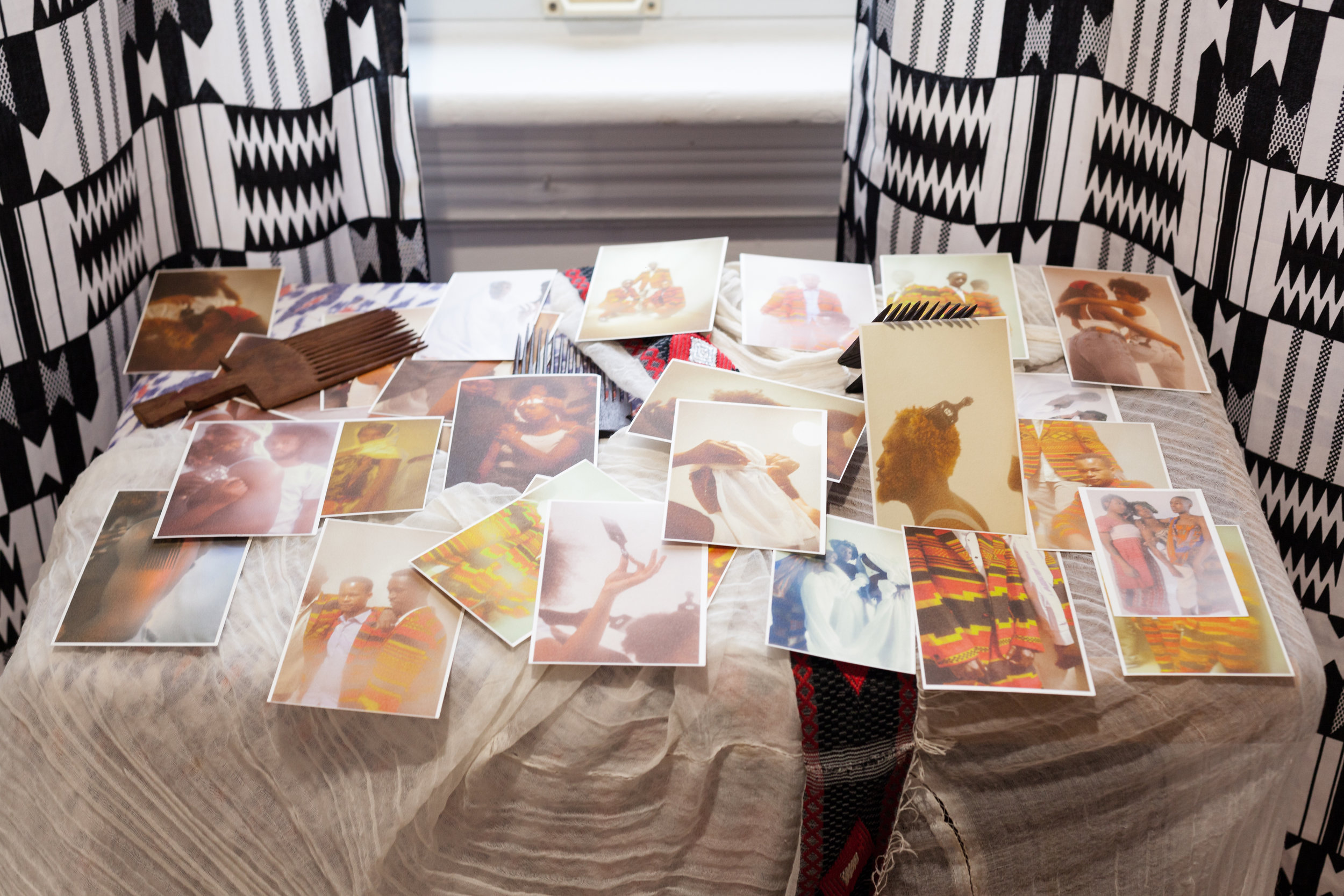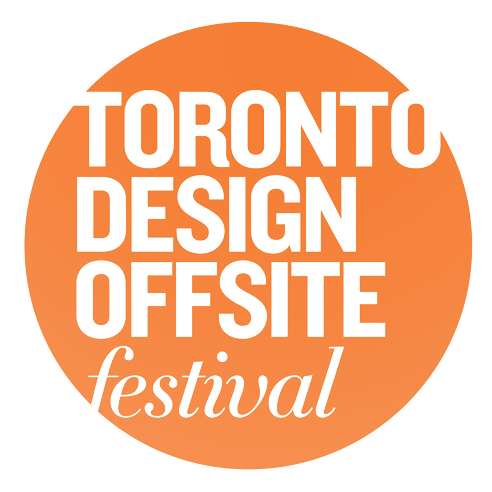Exploring new possibilities through participatory design
curation/ exhibit design
Jan 17 - 21 2018
An immersive multilevel installation transforming the BAND19 house into a cohesive future home existing in a Black-centric society which is devoid of oppression, discrimination, and systemic issues. We asked ourselves: What do these societies look like? How do they function? How can these futures be achieved? How do we deconstruct and remove colonial influence from our ideas surrounding the future? This exhibition represented an opportunity to explore these questions in an immersive and collaborative space, through critical and speculative design.
Curated by Andre Baynes and Chiedza Pasipanodya
In partnership with the OCAD University Black Youth Design Initiative
Fellows
Addae Nurse, Andre Baynes, Denzel Arthur, Kimani Peter, Lequanne Collins-Bacchus, Maisha Marshall-Ende, Peter Scott, Renee Mathews, Toni Cater
Not pictured here: Ashley Jane Lewis, Daejuawn Hamilton, Ene Agi, Kelvin Mendie, Michael Otchie, Olivia Spence, Thomas Graham
Futurism by Addae Nurse
Photos by Addae Nurse
DenimWigs - by Renee Matthews, worn here by Chiedza Pasipanodya
Media
Mutek IMG Festival 2018 - Inventing the future presentation and panel
Also featured on
Strategy
The exhibition was presented to each participant as follows:
This is space houses a community of people. We each make up a part of a unified system that supports our lives and our work. Our spaces flow into each other and affect one another. This place is managed by us and created by us, but we are structured by it. The infrastructure of this place is organized by cooperative digital and analog systems, social codes, and evolving goals. A reduced model of the world; a small city with a handful of citizens. How can we find our individual goals and build a collective purpose?
We then organized a series of workshops, meetings, and activities with the participants to understand each individual’s skills, interests and focus. A map of the connections and similarities between the artists and their projects was synthesized and used to make decisions around the organization and flow of the space. This provided a set direction for the space and how the story would be told in each room.
What is speculative
design?
Speculative design uses storytelling to explore ideas outside of physical constraints. It can be a powerful tool for exploring design solutions and reframing socio-economic issues through narrative and story. This kind of storytelling is evident in almost all forms of science fiction and has historically driven how we view the future and the role of technology in our lives. However, media and film has also constrained our expectations of the future and who is valued there.
What was
displayed?
This exhibition displayed works of design speculation across various mediums including: prototypes, models, videos, and interactive experiences. Each work aimed to imagine technologies and systems that highlight the experience of fictional members of new Black societies. Participants were able to interact with the installations and provide feedback and contributions to this crowdsourced model of the future.
Where was
it held?
The exhibition was held at BAND [Black Artists Network Dialogue] Gallery.
Categories
Food sovereignty
How might Black societies control our own food systems? How do we make sure our food sources are free of human exploitation?
the social economy
Capitalism is directly implicated in the past and contemporary enslavement of Black peoples. What comes after capitalism? How could we create equitable economic ecosystems?
the maker revolution
The proliferation of digital fabrication tools and open source platforms has enabled Black communities to create things, which would have been out of reach just a few years ago. How might we improve access to such tools? And what might be their further positive impact on Black societies?
Sustainable systems
How might these speculative Black societies be more conscious about the objects we make, buy, use and throw away? How might biomimetic design play a role in the way we live?
Special Thanks to,
Dori Tunstall, Dean of design at OCAD University, Band Gallery and Toronto Design Offsite Festival



